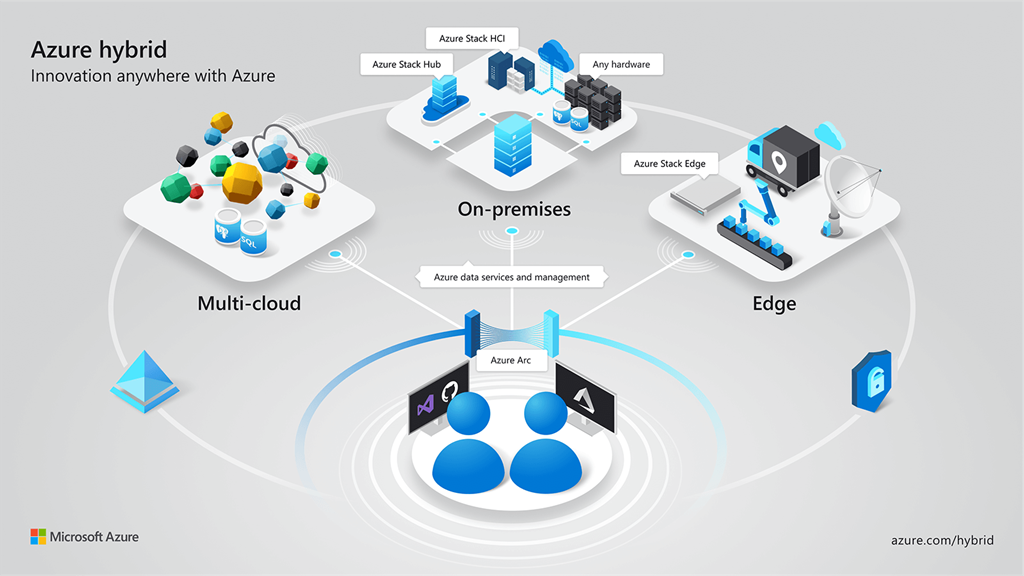Azure Arc has been announced during Ignite 2019. This new service will help you to manage multi-cloud, your On-Premises environment, and your edge, like Azure Stack. You’ll connect your servers (physical or virtual) directly in the Azure console, to manage them from only one console. You’ll be able to apply RBAC, tags, etc.
The announcement is available here: https://azure.microsoft.com/en-us/blog/azure-services-now-run-anywhere-with-new-hybrid-capabilities-announcing-azure-arc/ and the full documentation is available here: https://docs.microsoft.com/en-us/azure/azure-arc/servers/overview
To start, register the 2 resource providers that will help you to use Azure Arc (it’s currently in Public Preview), with these 2 commands:
|
When it’s done, you can check the status of the registration, directly by using these commands:
|
Now, you can navigate to the portal, by using the following URL: https://portal.azure.com/
Click on Add:
If you have many servers to register, I advise to use the second option, with a dedicated account, to avoid the connection to your Azure account every time: https://docs.microsoft.com/en-us/azure/azure-arc/servers/quickstart-onboard-powershell
Generate a script to integrate a server in the Azure Arc console. I’ll do this on my On-Premises servers:
Because I don’t need the proxy to connect to the internet, I’ll continue until the end:
If you click on Download, it will download the Powershell script that you must use on your servers. I’ll execute it:
After a few minutes and authentication on Azure, the server will be registered on Azure Arc:
And with my Linux server:
You can click on a server to manage it:
At this time, you can only assign tags, RBAC roles, see logs with Log Analytics and apply policies.
You can also add a server from the Windows Admin Center (version 1910 at least), by clicking on the server > Settings > Azure Arc for Servers:
As you see, this is a very interesting platform to manage all your environments. I’m sure that in the future, more services will be integrated with Azure Arc, like Azure hybrid services that we’ve in WAC.
















